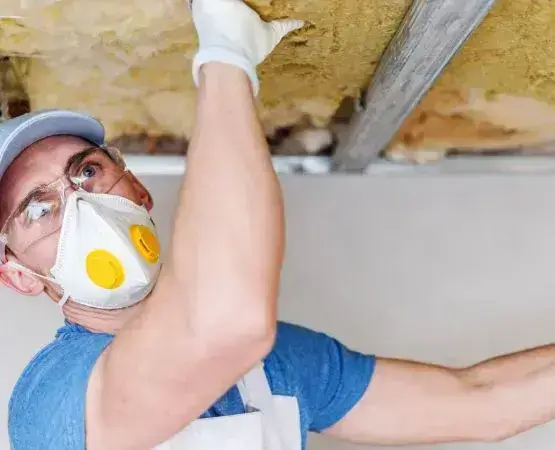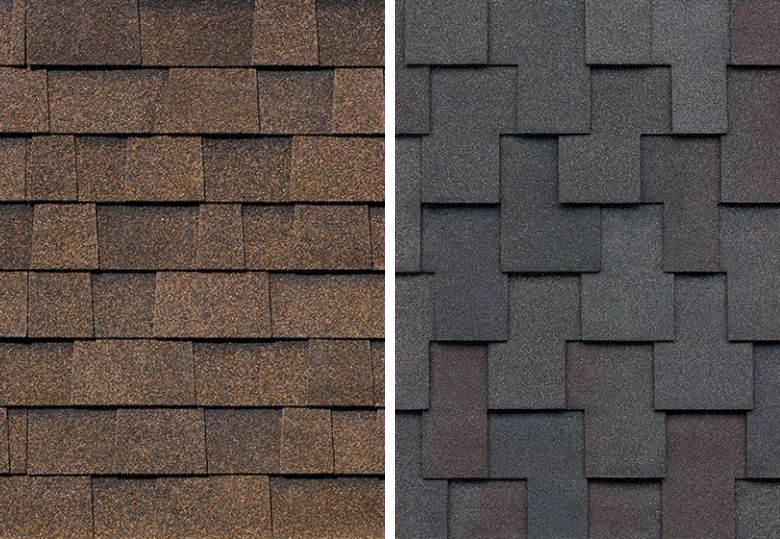Be aware; moisture damage may be happening in your attic right now!
With the cold weather interrupted by warm spells, you might see icicles forming along the edges of your roof. The kids love them, but it may mean that you have an ice dam or moisture in the attic.
Typically warm temperatures heat the snow on the roof, and it melts and runs down to the gutters and into the downspouts. But, with warmth during the day and freezing temperatures at night, water in the gutter can freeze into ice. Snow melts faster than ice, so the next day, the snow is pushing water down over the ice and off the roof, bypassing the gutter system. The ice dam forces water along the drip edge of the roof, and the drier underlying roof materials will draw the water, setting up ideal conditions for icicles and roof rot.
Removing Ice Dams
There may be snow on the roof you need to clear to get at the ice dam. Use a long-handled rake from the ground rather than a shovel to clear snow.
If you attempt using a ladder outdoors in the winter, it requires extra safety precautions due to icy conditions. Getting up on the roof may be dangerous as the shingles are icy.
Some homeowners will attempt to clear an outside ice dam by chopping and scraping away the ice. However, what they may not realize is that they removed shingle surfaces or punctured the roof material causing more damage. Pouring salt on the ice dam will eventually help to melt the ice, but may be damaging your home’s walkways and plants as the melted runoff leaves the roof. A better solution is pouring calcium chloride loosely into a tied-off pair of pantyhose and laying the pantyhose over the ice dam.
The best idea is to call a professional roofing company. They have specific tools like specialized rakes with wheels to remove snow from your home’s roof and blowers to melt the ice dam. They are accustomed to working on the roof in less than ideal conditions. For your safety, it is better to let them remove the ice dam safely.

Check Out The Attic
Ice dams form in areas with insufficient insulation, or due to air leaks in the attic. So, when you are digging out the ladder for Christmas decorations, take a minute to put it into the attic and check the roof and attic condition from inside the house.
You might see that the outside roof ridge in the attic needs more insulation. Wherever the ice dam was on the outside, there might be wet insulation on the inside. Take a picture of the dam on the outside, and it will help you locate where in the attic there may be trouble. Replace wet insulation, as it has lost its insulation value.
You might see frost on nails, along the edges of the rafters, or frost patches on the sheathing. Frost inside the attic usually means warm air is leaking from unsealed holes in the ceiling from your living spaces. Next to duct tape, caulk is the handyman’s best friend. Electrical wire or plumbing pipe is often pushed up through the ceiling. The small space that surrounds the wire or pipe needs caulking. There can also be bypass voids around chimney’s and vents. Use silicon sealant or foam insulation on smaller spaces. Larger spaces may need sheet metal patches, and areas near chimneys require high-temperature caulk. Vents in the roof should have seams sealed with mastic tape.
Common Locations Of Attic Bypass:
- Chimney
- Tops of walls
- Plumbing & electrical entry
- Light fixtures
- Dropped ceilings
- Knee walls
- Fans
- Heating ducts
Professional roofing companies can do a home pressure test if you are not sure that you have found all the leakage points. It is best to have these done in cold weather.
Reduce Moisture Sources In Your Home
The next thing you can do is reduce moisture levels in the home. Natural Resources Canada has some good information on reducing moisture and saving on heating costs. They state that average household activity from cooking, cleaning, bathing, washing clothes, and even breathing puts almost 50 litres of moisture into the air per week.
Check to see that exhaust fans from the stove, dryers, or bathrooms are vented outside and not into the house or attic. If not, they are pumping moist air into the attic, setting conditions for mould to develop. Do you put on the ceiling fan after a bath or shower? Most people don’t. It is recommended to run the bathroom fan for 15 or 20 minutes after bathing or showering to prevent moisture buildup. You may use a humidifier in the winter because of drier air conditions. But, if you are finding moisture in the attic, or condensing on windows, there may be adequate moisture in the house.
Outdoor Precautions
Knockdown overhanging snowdrifts and shovel snow away from the walls of the house to help prevent ice dams and reduce home moisture levels.





